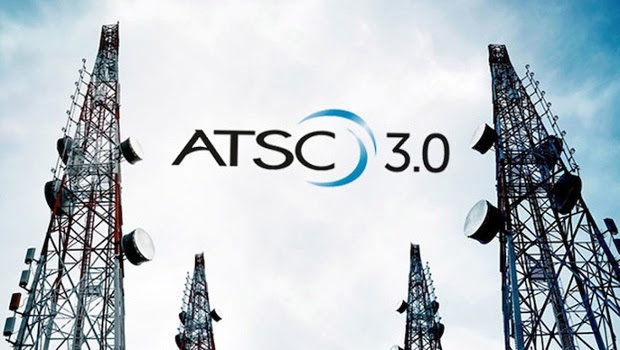How ATSC 3.0 is Driving New Revenue Streams
TV stations need to make sure they have a clear and precise market strategy

TV stations worldwide are currently missing out on potentially billions in revenue by not taking full advantage of the benefits of ATSC 3.0 technology. ATSC 3.0, also known as NextGen TV, is rapidly evolving the broadcasting landscape, with sales expected to soar to 4.5 million in 2022 and 11 million in 2023. It should come as no surprise that such numbers when the standards of this technology provide the infrastructure for newer technologies. ATSC 3.0 is an IP-native data pipe that functions in broadcast TV frequencies.
The current possibilities created by ATSC 3.0 emphasize why the scale for monetizing is potentially massive for TV stations. Ensuring that they adopt effective strategies will be vital to securing their future in an incredibly competitive market.
What are ATSC 3.0’s Capabilities?
ATSC 3.0 has marked a significant shift in the future of television since the launch of ATSC 1.0 in 1996. It gives operators the flexibility and robustness they have been craving for a long time. This greater operational efficiency is achieved through state-of-the-art encoding and modulation technologies, warranting a more effective use of the limited spectrum resources. As a result, it provides the capacity to transfer UHD video content and immersive audio content via terrestrial channels with little effort, time, or cost. All of this is made possible by IP technology in its baseband.
Its capabilities also enable more effective public alerting and targeted advertising, creating a personalized and interactive viewing experience. Such viewing experiences are now possible, resulting in more compelling content through different camera angles and sports stats.
Alongside the significant enhancements in viewing experience, ATSC 3.0 brings further changes to linear television by creating opportunities for TV stations and TV manufacturers to explore new business models in a highly regulated market. Research by BIA Advisory Services supports this, having found that new datacasting revenue from NextGen TVs is likely to reach $5 billion by 2027 and $10.7 billion in new revenue by 2030, accounting for 22% of the total local broadcasting revenues by 2030.
The Critical Revenue Streams Powered by ATSC 3.0
TV stations know the ATSC 3.0 standard opens up more significant opportunities to push more channels to market quicker and generate new revenue streams, including using some of the spectrum for non-TV uses.
Geolocation services are just one example of the new revenue streams unlocked by ATSC 3.0. Geolocation services refer to the infrastructure that enables mobile users to identify their current physical location. Datacasting can power multiple use cases, including the Internet of Things (IoT), drones, asset, supply chain tracking, and connected cars, delivering data accurately down to centimeters.
With more connected devices than ever, the added benefit for TV stations is that this is already an established market with plenty of room to maneuver. Datacasting provides much-needed breathing room for wireless services providers who can leverage the existing broadcasting infrastructure to deploy geolocation services, reducing their CAPEX.
In addition, ATSC 3.0-enabled TV sets can pave the way for new business models powered by interactive content delivery, including customized ads and offers, opening up new revenue opportunities through linear, addressable advertising. TV stations can now serve ads with interactive overlays that target a specific audience that is localized and relatable to them. A personalized approach like this is changing the way we watch TV for the better.
ATSC 3.0 also provides TV stations with greater channel capacity enabling them to create and monetize more channels across both SD and HD. Delivering a rich depth of content choices for consumers empowers a more significant opportunity for monetization. Through ultra-low latency, TV stations can minimize delays and maximize the audience’s viewing experience.
What are the Next Steps?
The transition to ATSC 3.0 couldn’t be easier, but TV stations need to make sure they have a clear and precise market strategy to mitigate any challenges. The system must be implemented from the outset and cover how and when they will use the data and distribute the content.
There are also considerations around the ATSC 3.0 rollout As NextGen TV takes off in the US, it’s essential to maintain the momentum by completing new market launches and achieving nationwide coverage.
ATSC 3.0 regulation is critical for shaping the future of NextGen TV. Currently, the broadcasting industry is streamlining the regulatory aspects of transitioning to ATSC 3.0. It is vital to consider that ATSC 3.0 TVs drive many stations broadcasting in the new standard. Next-generation broadcasting reaches almost half of all American viewers, and is expected to increase throughout 2022, with forecasts that TV manufacturers will sell 10,000 ATSC 3.0 enabled TV sets per day.
The ecosystem is clearly developing to take advantage of the new standard and as soon as there is a critical mass, the ATSC 1.0 transmitters can be converted to ATSC 3.0, driving even greater capacity for new applications. Therefore the longer the rollout takes, TV stations will miss out on their revenue opportunities, falling behind competitors.
Once the industry has addressed these potential challenges in the transitional period, media companies will be able to help drive the future of television.
Why Strategizing Now Will Benefit TV Stations in the ATSC 3.0 Era
ATSC 3.0 provides better quality content that enhances the TV experience altogether. With more channel capacity, signal efficiency, and better quality content, comes an excellent viewing experience. The broadcast industry is changing for the better, and media companies need to take advantage of this technology now to meet the growing demand of the marketplace and enjoy greater revenue streams. Media organizations have the unique opportunity to make the most of new business models that can help them thrive in the broadcasting landscape.
TV stations powered by ATSC 3.0 can reap the rewards of datacasting, and become leading players in driving numerous use cases that change how we work, get entertained, and experience the world. The benefits of acting now will position TV stations for tremendous success. Now is the right time to become part of the ATSC 3.0 revolution.
Get the TV Tech Newsletter
The professional video industry's #1 source for news, trends and product and tech information. Sign up below.

Mary Crebassa is VP, Major Accounts for LTN Global
